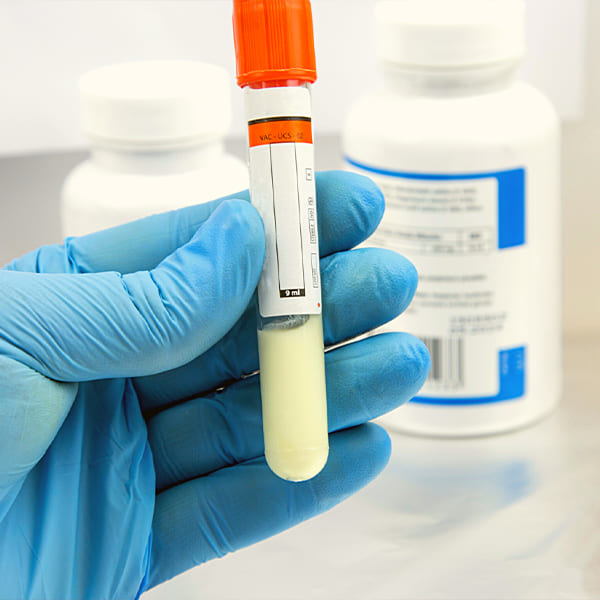- Home
- About Us
- Why BFI
- Treatments
Advanced IVF Treatment
Donor Services
Fertility Preservation
Advanced IVF Treatment
Donor Services
Fertility Preservation
- Locations
- Resources
- Contact Us
Male Infertility
Infertility means not getting pregnant after unprotected sex for one year if the female is less than 35 years and 6 months if the female is more than 35 years of age.
About 15 to 20% of couples worldwide face the problem of infertility. For infertility, in 40% of cases, female partner is responsible; in 40% of cases, male partner is responsible; in 10-20% of cases, both partners are responsible. Sometimes a pinpoint cause cannot be found, which is called unexplained infertility.
Infertility can be primary where the woman has never been pregnant or secondary when there is difficulty in conceiving after childbirth or miscarriage.
For pregnancy to occur, several things have to happen:
The mature egg must be released from the ovary (ovulation). The egg must then be picked up by one of the fallopian tubes.
A man’s sperm must travel through the uterus to the fallopian tube to meet and fertilize the egg.
The fertilized egg must travel through the fallopian tube and attach (implant) to the uterus lining. know more
Male infertility causes
Virility and fertility are different in men. Normal sexual function and ejaculation do not mean normal fertility.
Structural or other defects in the reproductive system, hormonal deficiencies, past viral infections and trauma to the genital region may cause infertility in men.
In a significant proportion of patients, the exact cause for poor semen report can’t be identified.
Common medical conditions leading to subfertility are:
Structural causes
- Varicocele: These are dilated scrotal veins. They inhibit the development of sperms because they increase local temperature and prevent adequate blood flow. Varicocele can be detectable on physical examination, or they are diagnosed on ultrasound. If you have varicocele but a normal semen report, you may not require surgical correction. Surgery may help in gross varicocele – grade 3/4 varicocele. The effect is lasting for a short term.
- Retrograde ejaculation: Ejaculation happens, but the semen goes into the urine bladder instead of coming out from the penis. This condition is common in diabetic males.
- Blockage of sperm transport: Any portion of the male reproductive tract, such as the vas deferens or the epididymis, can become obstructed and thus prevents the normal transport of sperm.
It can be due to repeated infections, previous surgery, inflammation, or other developmental problems. - Past viral infections: Certain viruses like the mumps virus can affect the testes and damage some sperm-producing cells permanently
- Congenital absence of vas deferens: Vas deferens transports sperm from testes to semen. In some patients, it may be absent by birth.
- Azoospermia zero sperm count: When there is zero sperm count in the semen, it is called azoospermia. Even in this situation, men can become a father with his own sperm with use of TESA-ICSI.
Functional causes
- Hormone deficiency: The hormones of the pituitary gland in the brain signal the testicles to produce sperm. When these hormone levels are extremely low, there can be difficulty in sperm development.
- Erectile dysfunction: Problems in intercourse is one of the leading causes of infertility. It can be because of hormonal as well as unexplained causes.
Genetic causes
- The presence of abnormalities in the number of chromosomes, chromosomal rearrangements ( translocations) and their structure, and missing parts of the Y chromosome, can cause male infertility.
Lifestyle causes
- Overweight, excessive caffeine intake or alcohol, smoking, recreational drugs use etc.
Unexplained causes
- Normal healthy men with normal sexual function and hormones also can have poor or even very poor semen parameters.

How is male infertility diagnosed?
An accurate, detailed and reliable semen analysis and examination as per WHO criteria and physical examination is the first step to identifying male subfertility.
For primary investigation, if both of these are normal, no further test may be required.
If there is a problem with the semen report, the male infertility doctor may request a hormonal profile to determine the production capacity of the testicles and check if medical treatment can be helpful.
Sperm DNA fragmentation test – Sperms that look good under a microscope may have DNA damage or reduced fertilizing capacity. High DNA fragmentation means poor sperm DNA integrity. Read more
The additional test includes genetic tests and ultrasound of the scrotum.
Male Infertility Treatment
Treatment of male infertility will depend on the reason for infertility. Treatment can be possible by medications, surgery and assisted reproductive techniques (ART) that can be used to overcome many of the underlying fertility problems.
The options are:
Surgery: To repair dilated scrotal veins varicoceles. Repairing these dilated veins improves sperm movement, concentration and structure.
In some cases of blockage, an attempt to surgically correct the obstruction that causes infertility can also be made. However, it is a complex surgery. The results with this surgery are not good, and IVF-ART is a better option/
Medications: In case of hormone deficiency, supplementing the hormones can restore normal sperm production. Not all patients benefit from medicines; careful hormonal evaluation can find the most suitable candidates.
If there are infections, curing them will help. If these techniques fail or the reason is unexplained, it is better to opt for ART. Depending on the problem, the male infertility specialist may consider different treatments. For mild to moderate reduction in sperm numbers or motility, IUI can be helpful.
For moderate to a severe reduction in sperm numbers or motility IVF & ICSI are better options.
Azoospermia zero sperm count treatment is possible with ICSI. Read more
Understanding the Semen Report
Compared to many of the female fertility tests, a male semen analysis is non-invasive, relatively inexpensive, and produces fast and accurate results. It is the first investigation for any couple facing difficulty to conceive.
What do we measure in a male semen analysis?

Volume: Semen volume is the total amount of fluid ejaculated. A normal amount is 2 millilitres and more.
Sperm count: The sperm count is determined by looking at the semen sample under a microscope. It is a measure of how many million sperm are in each milliliter of semen. In the literature, it is also called “sperm concentration”. A normal sperm count is 15 million sperm or more per millilitre. Oligospermia is when there are less than 15 million sperm per millilitre. Azoospermia is when there is no sperm at all.
Sperm Motility: Movement of Sperm. Sperm motility is the forward swimming movement of sperm. In order for a sperm to fertilize the egg, it must travel rapidly through the female reproductive system. This requires a strong swimming action.
Progressive Mobility (PR): sperm that actively moves, either linearly or in a large circle, regardless of speed.
Non-progressive motility (NP): all other motility patterns with absent progression, for example, swimming in small or just observing a tail movement of a beat. It is normal to have more than 32% progressively mobile (PR) sperm cells and 40% as a combination of progressively and non-progressively motile sperm (PR and NP). Total motile sperm count (TTMR): refers to the total number of motile sperm in the entire ejaculate.
Sperm Morphology: size and shape are Also known as sperm structure. Abnormal sperm may be unable to move normally or to penetrate an egg. If more than 96% of sperm are of abnormal size and shape, it can pose a significant fertility problem.
Colour and Viscosity: A complete semen analysis involves evaluation of the colour and viscosity (thickness) of the seminal fluid, as well as an analysis of the time until the semen sample liquefies.
The pH of the semen Semen is typically a slightly alkaline substance, with a normal pH of 7.2-8.0. An abnormally high or low pH of semen can cause sperm death. It can also impact the ability of the sperm to swim quickly and/or effectively penetrate the egg.
Sperm vitality: Sperm vitality is related to the number of live and intact sperm. Dyeing the semen with colour determines the vitality of the sperm. The dye stains the dead sperm as they are no longer intact.
White blood cell infiltration: It is normal for semen to contain some white blood cells. However, too many white blood cells in a sample can indicate the presence of an infection, which can decrease the quality of the semen. It is normal when the semen contains less than one million white blood cells/ml.
Presence Fructose: Fructose is secreted by seminal vesicles. The absence or presence of fructose is very vital in the understanding cause of azoospermia.
In general, a man with better semen parameters is more likely to make his partner pregnant faster. Therefore, optimizing these parameters as much as possible is beneficial for fertility.
At Bavishi Fertility Clinic, we encourage all men to have their detailed semen examination done. Testing as soon as possible allows time to improve sperm quality in case of inconsistencies
Fertility specialist’s help for men
Our specialists will carry out the appropriate physical tests and examinations to find the origin of the patient’s problem. In this way, through the diagnosis, we can apply the most appropriate medical treatment to recover the full sexual health of the man.
We address all areas that concern male sexuality and reproductive function, such as male infertility, erectile dysfunction, ejaculation disorders and even different surgeries such as implants, circumcision or vasectomy reversal.
Advantage BFI
We have the latest medical technology to carry out the best diagnoses and total treatment solutions for male infertility. Semen examination to medical treatment, surgery to microsurgery, sperm freezing to ICSI, IMSI, PICSI, TESA, PESA.
Don’t be the ignored part of an infertile couple.
Get the correct guidance and solution now.
